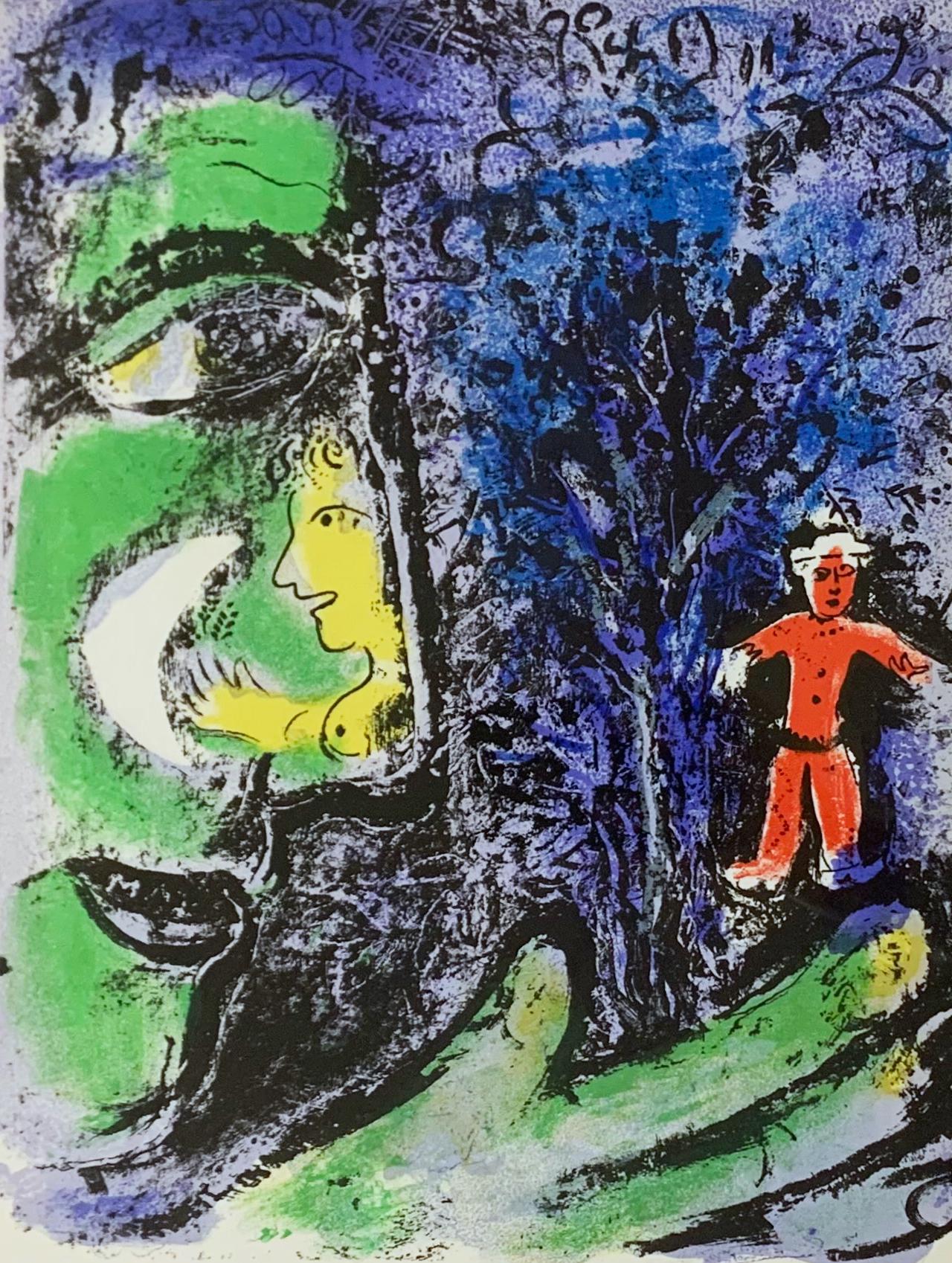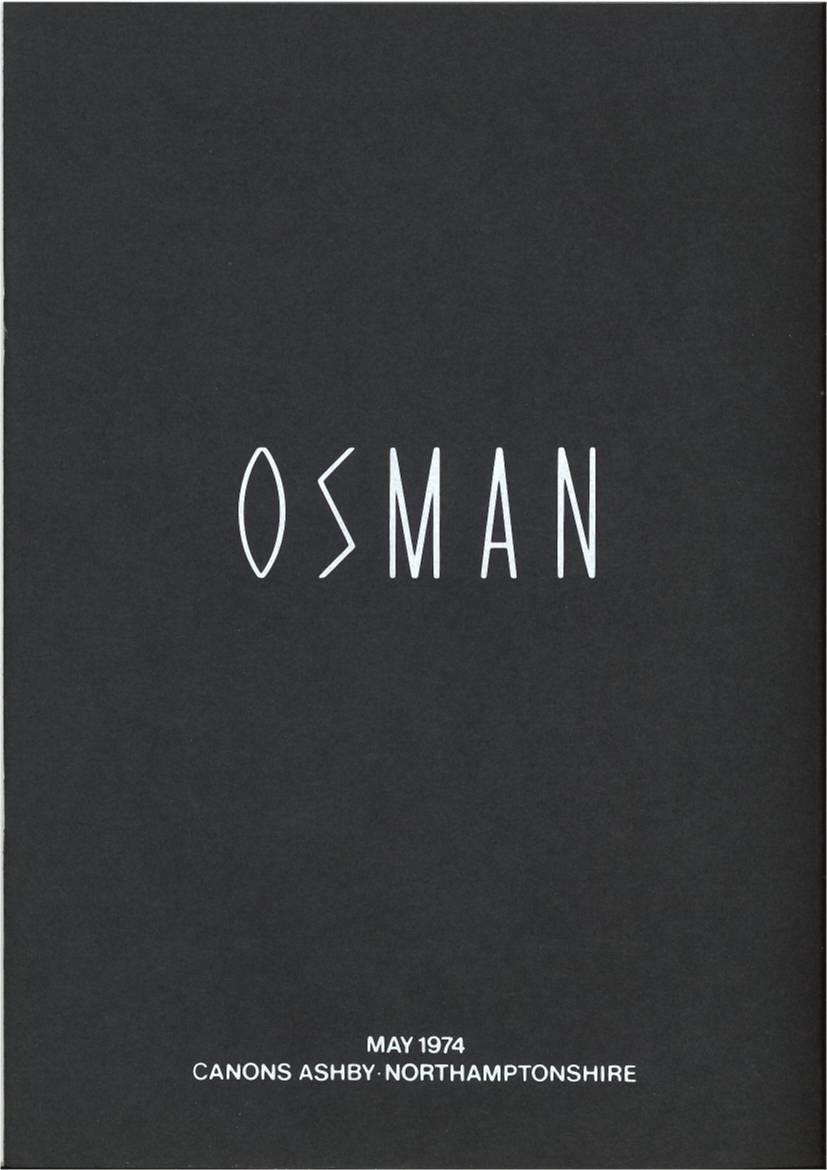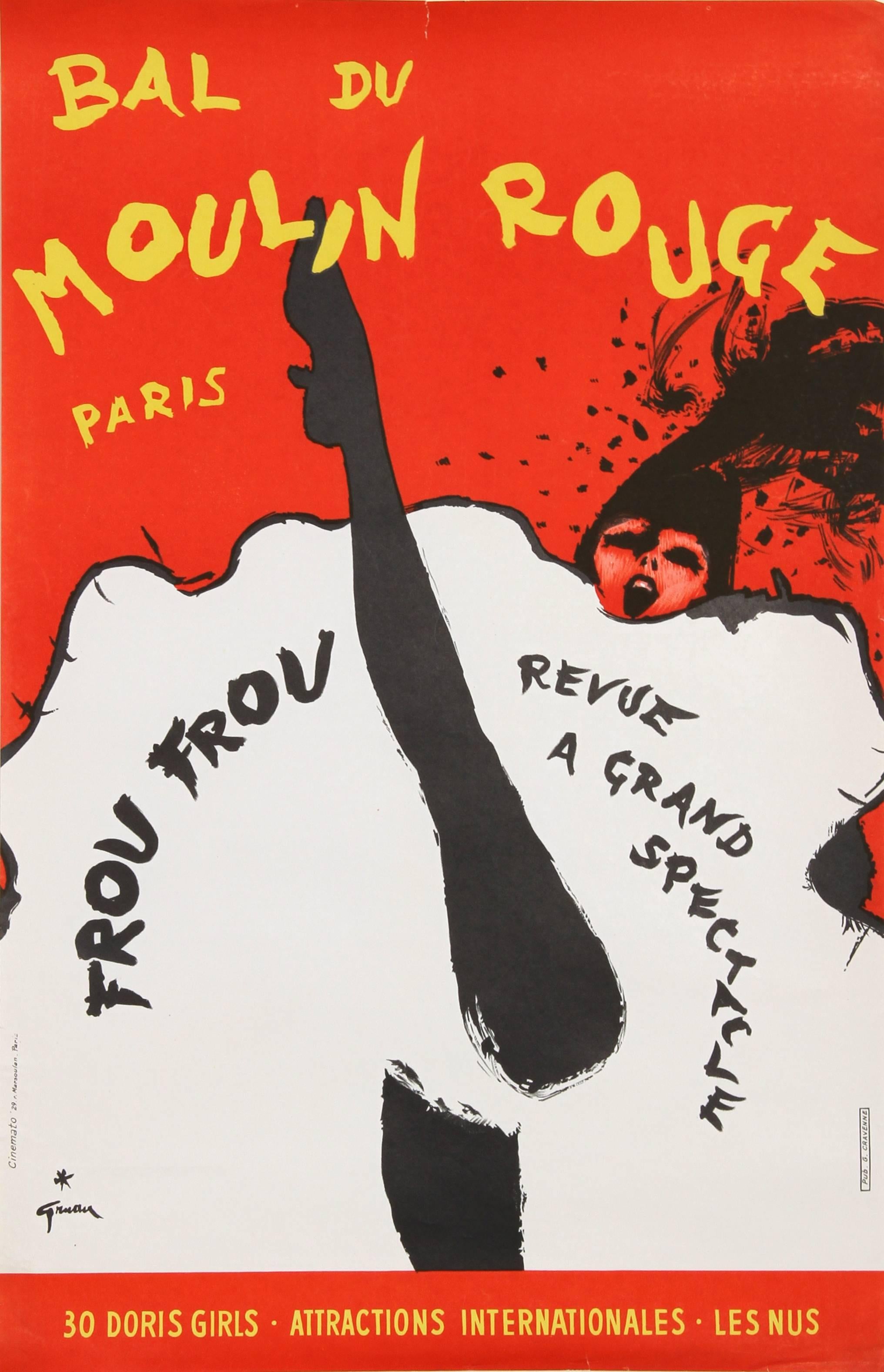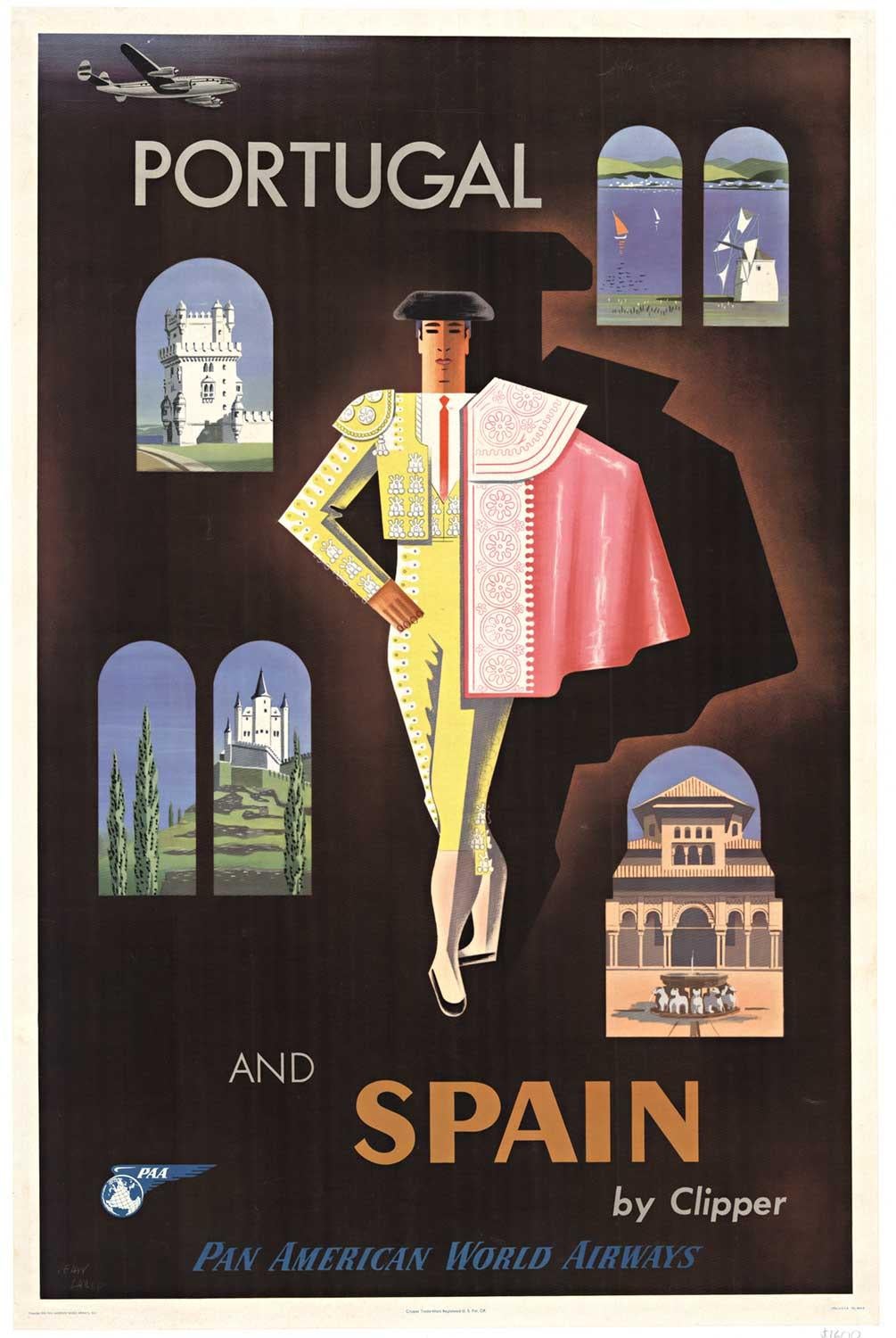Items Similar to Vintage Russian Shtetl Scene, Jucaica Print
Want more images or videos?
Request additional images or videos from the seller
1 of 12
Anatoli Lvovich KaplanVintage Russian Shtetl Scene, Jucaica Print1957-1961
1957-1961
About the Item
Pencil signed and dated, colored Judaica Lithograph.
Anatoli Lwowitch Kaplan was a Russian painter, sculptor and printmaker, whose works often reflect his Jewish origins.
His father was a butcher in Rahachow which was at that time within the Jewish Pale of Settlement in Russia. His background was therefore not dissimilar to that of Marc Chagall, born a generation earlier in 1887, and although their lives were very different, their art has much in common. The shtetl figures in many of Kaplan's paintings - autobiographical references are very clear in The Butcher's Shop (1972) and Tailor's Shops (1975) and in the many illustrations which he was to create to the works of Sholem Aleichem. Along with Mane Katz, Issachar ber Ryback and Yankel Adler he was one of the artists who brought the joy and mystery of the Shtetl to Western Europe.
Around 1922 Kaplan came to Leningrad (then named Petrograd), where he was to base his career for the rest of his life, although he often revisited the towns of his childhood. He graduated in 1927 from the Russian Academy of Arts there.
In the 1930s he became associated with a group of artists and lithographers in Leningrad which had been instructed to prepare a series of works dedicated to the remote Jewish Autonomous Oblast, being created by Joseph Stalin in the hope of resettling Russia's Jewish population in a remote area in the Far East of the country. Here Kaplan learnt and took to the skills of printmaking, developing many individual techniques. His first cycle of prints (1937–1940) was entitled Kasrilevka, (the name of the village invented by Sholem Aleichem).
During the war Kaplan was at first evacuated to the Urals, but returned to Leningrad in 1944. His lithograph cycle of Landscapes of Leningrad during the Days of the Blockade(1948) was widely acclaimed in Russia and was purchased by eighteen State galleries.
From the 1950s onwards Kaplan's artworks concentrated on Jewish themes, despite constant and often serious opposition and obstruction from the Soviet cultural authorities. Amongst these works should be mentioned his cover and illustrations to the Jewish Folksongs of Dmitri Shostakovich (1977), illustrations to Aleichem's Tevye the Milkman (3 series, 1957–1966), The Enchanted Tailor (1954–57) and Song of Songs (1962), and a magnificent series of coloured lithographs (printed in London in 1961) on the old Jewish Passover song Chad Gadya (One Kid Goat). Throughout this time Kaplan was also producing paintings though in view of their subject matter they were rarely displayed in the Russia of his time. From 1967 onward he began also to produce ceramics and sculptures, including a remarkable set based on the characters of Gogol's Dead Souls.
A substantial retrospective exhibition of Kaplan's work was held at the Russian Museum, St. Petersburg, in 1995. Other major exhibitions have been held in New York City (1992), London, Amsterdam, Jerusalem and elsewhere.
- Creator:Anatoli Lvovich Kaplan (1902 - 1980, Russian)
- Creation Year:1957-1961
- Dimensions:Height: 24 in (60.96 cm)Width: 18 in (45.72 cm)
- Medium:
- Movement & Style:
- Period:
- Condition:Minor wear to edges.
- Gallery Location:Surfside, FL
- Reference Number:1stDibs: LU38211064632
About the Seller
4.9
Platinum Seller
These expertly vetted sellers are 1stDibs' most experienced sellers and are rated highest by our customers.
Established in 1995
1stDibs seller since 2014
1,560 sales on 1stDibs
Typical response time: 1 hour
- ShippingRetrieving quote...Ships From: Surfside, FL
- Return PolicyA return for this item may be initiated within 3 days of delivery.
More From This SellerView All
- Colorful Russian French Judaica Jewish Shtetl Wedding Lithograph Mourlot ParisBy Mane KatzLocated in Surfside, FLMane-Katz (1894-1962) Original Lithograph published by Andre Sauret, Monte Carlo, 1966, printed in France, by Mourlot. The ouvrage sheet is not included. this is from a limited editi...Category
1960s Modern Figurative Prints
MaterialsLithograph
- Vintage Russian Ukrainian Shtetl Scene Judaica Lithograph Jewish PortraitBy Anatoli Lvovich KaplanLocated in Surfside, FLPencil signed and dated, Judaica Lithograph. Anatoli Lwowitch Kaplan was a Russian painter, sculptor and printmaker, whose works often reflect his Jewish origins. His father was a b...Category
Mid-20th Century Modern More Prints
MaterialsLithograph
- Vintage Russian Ukrainian Shtetl Scene Judaica Lithograph Jewish PortraitBy Anatoli Lvovich KaplanLocated in Surfside, FLPencil signed and dated, Judaica Lithograph. Anatoli Lwowitch Kaplan was a Russian painter, sculptor and printmaker, whose works often reflect his Jewish origins. His father was a b...Category
Mid-20th Century Modern More Prints
MaterialsLithograph
- Vintage Russian Ukrainian Shtetl Scene Judaica Lithograph Jewish PortraitBy Anatoli Lvovich KaplanLocated in Surfside, FLPencil signed and dated, Judaica Lithograph. Anatoli Lwowitch Kaplan was a Russian painter, sculptor and printmaker, whose works often reflect his Jewish origins. His father was a b...Category
Mid-20th Century Modern More Prints
MaterialsLithograph
- Vintage Russian Ukrainian Shtetl Scene Judaica Lithograph Jewish PortraitBy Anatoli Lvovich KaplanLocated in Surfside, FLPencil signed and dated, Judaica Lithograph. Anatoli Lwowitch Kaplan was a Russian painter, sculptor and printmaker, whose works often reflect his Jewish origins. His father was a b...Category
Mid-20th Century Modern More Prints
MaterialsLithograph
- Large French Judaica Lithograph Colorful Jewish Jerusalem HebrewBy Théo TobiasseLocated in Surfside, FLTheo Tobiasse Title "Jerusalem de tous les fruiets" Medium: Original lithograph in colors on paper (deckle edged paper) Hand signed and numbered in pencil by the artist Paper size : 36x27 in (92x69 cm) Image size : 30x22 in (77x55 cm) Edition : 199 Year : 1999 This depicts a Dove of peace over a basket of first fruits in the Old City of Jerusalem Theo Tobiasse, (Israeli-French) born Tobias Eidesas, 1927 in Jaffa, Israel then in British Mandate Palestine, died 2012 in Cagnes-sur-Mer in France. Well known painter, engraver, draftsman and sculptor. French Jewish artist. The youngest son of Chaim (Charles) Eidesas and Brocha (Berthe) Slonimsky from Kaunas, Lithuania, Théo Tobiasse was born in Mandatory Palestine in 1927, where his Jewish parents lived since 1925, far from the threat of pogroms and upheavals of East European policies. The family encountered material difficulties and decided to return to Lithuania, ultimately leaving for Paris in 1931 where his father typographer finds work in a Russian printing press. Theo Tobiasse shows very early talent for drawing and painting, and during a visit to the Special Exhibition of 1937 held in Paris, he is enchanted by Raoul Dufy. The death of his mother (in June 1939) followed by the outbreak of the Second World War, Paris under the German Nazi occupation, the wearing of the yellow star and his registration at the National School of Decorative Arts denied for racist reasons upsets his life. He enrolled in a private advertising design course on the boulevard Saint-Michel, which he abandoned nine months later because his family, narrowly escaping the Winter Vélodrome roundup in July 1942 was forced to hide in an apartment in Paris for two years. At the Liberation of Paris, he quickly began a career as an advertising graphic designer with the Draeger art printer and also produced tapestry cartoons, stage sets and Hermes showcases at the Hermès boutique on rue du Faubourg Saint-Honoré. In 1950, he obtained French nationality and moved to Nice in the Alpes-Maritimes, where he continued his advertising graphic design career. His first paintings were exhibited at the Salon des peintres du Sud-Est in 1960. He was laureate in 1961 the "prize of the young Mediterranean painting" and Armand Drouant offers him a first contract and exhibited at the Faubourg Saint-Honoré Gallery in Paris in 1962. Théo Tobiasse also won the Dorothy Gould Prize in 1961. He decided to devote himself solely to the visual arts. Numerous exhibitions are dedicated to him all over the world, in Paris at the Drouant Gallery, in Geneva, Montreal or Tokyo, then London, Zurich, Lausanne, Los Angeles, Kiev, and then a first personal exhibition in New York (1968). Self-taught, he studied the technique of grand masters in museums during his travels. The reliefs, glazes and colors of Rembrandt's Jewish Fiancee at the Rijksmuseum in Amsterdam, in particular, open up new technical possibilities that he explores in his canvases back to his studio. The figurative subjects without narrative or symbolism (cat, bird, kite, velocipede, etc.) of his first paintings, allow him to focus on the techniques, the color and the texture of oil painting and gouache. From 1964, Theo Tobiasse develops a more personal iconography drawn from his own memories of his childhood in Lithuania, the wanderings of a family seeking a land of asylum and the Holocaust. The train, the one which drove his family from Kaunas to Paris, or the Jews to the camps, becomes a recurring motif and memory a major theme in his work. A visit to Jerusalem, Israel in 1970 brings him closer to his Israeli Jewish origins. He created his first Judaic stained-glass windows on the theme of "Jewish Feasts" for the Jewish Community Center in Nice and a monumental oil painting titled " Que tentes sont beau", O Jacob (1982). He continues to travel and immerse himself in the cultures he meets, New Orleans jazz, Mexican archaeological sites and Native American totems . In New York, he meets Elie Wiesel (1982). While Josy Eisenberg makes a film about Théo Tobiasse, entitled Tell me who you are painting, for French television in 1977, many personal exhibitions are devoted to him in France and abroad, notably at the Passali gallery in Paris, France. Atheneum Museum in Geneva and the Nahan Gallery in New Orleans. In 1983, a retrospective exhibition of his work was organized in Nice , at the Museum of Contemporary Art in Ponchettes. Carborundum engraving, lithography, stained glass, mosaic, pottery, bronze and ceramic sculpture are all tools of expression he first explored in the studio he had built at his home on the heights of Nice (1954 -1972), then to the Rauba Capeu wharf in Nice (1971-1976). He leaves Nice to install his main workshop on his property in Saint-Paul-de-Vence in 1976. In collaboration with Pierre Chave, lithographer in Saint-Paul-de-Vence, Théo Tobiasse is developing a technique for making lithographs of eighteen to twenty colors that he produces for many original portfolio editions published in France, Sweden and the United States. In addition to the theme of memory of the wanderings and exodus of his family and the Jewish people, the personal iconography of Tobiasse comprises three other major themes that recur in his work: The cities that are dear to him (Paris and Jerusalem, first, then New York and Venice from the 1980s); twenty-eight monochrome gouaches, From Notre-Dame to Saint-Germain-des-Près (1969). The Hebrew Bible, an endless source of human dramas, which he re-imagines in contemporary times. Rachel (1978), Sarah and the three messengers (1981),Bathsheba in the Garden of Pomegranates (1982). The woman, lover, erotic and shameless, Daphnis and Chloé (1978), Portrait of a woman immobile in ecstasy , (1978), a creature-sex apple whose skin burns and arms twist (1980). To explore the theme of the erotic woman, Tobiasse adopts nude drawing in graphite, ink and pastel on paper, as well as the writing of poetic texts he inscribed in his drawings and notebooks. The American merchant, Kenneth Nahan Sr., met in 1978, encourages Théo Tobiasse to join in the United States other French painters he represents, including Max Papart and James Coignard. Tobiasse moved to New York in 1984. He first worked at the Chelsea Hotel and then set up his studio in Manhattan. He decides to split his time and his work between Saint-Paul-de-Vence and New York. The first paintings painted in America are distinguished from their European production by their scale and their bright themes. Oil-painted canvases are filled with family portraits, children, and biblical characters. My family came from Lithuania, Little Girl Sitting , Saul and David (1984). In these paintings, families no longer flee the pogroms in the trains, but land in New York, new host country according to his imagination, as in America (1984). He also created the Myriam sculpture in New York, which became the model for the Venus, a monumental bronze sculpture to be installed at the entrance of Saint-Paul-de-Vence in 2007 15. New York joins the inspiring cities of Theo Tobiasse and the woman now personifies freedom. Along with Marc Chagall, Raya Sorkine, Zamy Steynovitz and Yoel Benharrouche, Tobiasse becomes one of the pillars of modern French Judaica art. Back in Saint-Paul-de-Vence, he experimented new techniques from 1986. He abandoned oil painting and gouache for acrylic, less restrictive. His mixed techniques on paper or canvas, mix collage, acrylic painting and pastels. He develops cut and painted wood or steel panels for large formats and public display. In 1992, a retrospective exhibition of Théo Tobiasse's work was organized at the Cagnes-sur-Mer castle-museum. His workshops become meeting places for artist friends such as Ben and Arman. Chaim Potok visits Saint Paul's studio several times, dedicates to him a Tobiasse monograph: Artist in Exile published in 1986 in New York, and there meets the writer James Baldwin, friend and neighbor of Théo Tobiasse in 1987. He travels extensively for his solo shows. In 1987, Vision New Japan exhibited his latest paintings in Tokyo , Kokura and Mito and then in 1991, large sculptures in carved and painted wood panels in Tokyo , Osaka , Nagoya , Kobe , Fuokoka and Taipei . He discovers Prague in 1992 and returns there in 1995, and travels every year to Venice to draw. Théo Tobiasse discovers the work of set design with the creation of sets and costumes for the puppet theater. He creates an album of lithographs for the fifth centenary of the expulsion of the Jews from Spain. The Garden of the Psalms , a series of seven stained glass windows created in the workshop of the master glassmaker Alain Peinado, is inaugurated at the Esplanade Jewish community center in Strasbourg on the occasion of the bicentennial of the emancipation of the Jews. He continues with the creation of twelve monumental windows entitled The Song of the Prophets for the Nice Synagogue which are inaugurated in 1993. In 1994, he participated with other artists of the Nice region (Arman, Ben, Jean-Claude Farhi, Claude Gilli...Category
1990s Modern Figurative Prints
MaterialsLithograph
You May Also Like
- Profile and Red Child, from Mourlot Lithographe IBy Marc ChagallLocated in Washington, DCArtist: Marc Chagall Title: Profile and Red Child Portfolio: Mourlot Lithographe I Medium: Lithograph Year: 1960 Edition: Unnumbered Framed Size: 18 1/2" x 15 1/2" Image Size: 12 1/2...Category
1960s Modern Figurative Prints
MaterialsLithograph
- National Savings 1949 original vintage calendar posterLocated in London, GBNational Savings calendar poster (1949) Lithographic poster 50 x 37 cm Printed for HMSO by Mardon, Son & Hall Ltd, Bristol. An original lithographic poster advertising the National...Category
1940s Modern More Prints
MaterialsLithograph
- Les MargueritesBy (after) Georges BraqueLocated in New York, NYBoldly colored floral motif color aquatint. Signed and numbered 48/300 in pencil by Braque.Category
1950s Modern Still-life Prints
MaterialsColor, Aquatint, Lithograph
- Louis Osman Architect Goldsmith Silversmith 1974 catalogue Prince of Wales CrownBy Louis OsmanLocated in London, GBAs Goldsmith Osman designed the Crown for the Investiture of the Prince of Wales in 1969, and as architect he commissioned Jacob Epstein's chef d'oeuvre, the Madonna and Child on the...Category
1970s Modern More Prints
MaterialsLithograph
- "Bal du Moulin Rouge, Paris (Frou Frou)" Lithograph Poster by Rene GruauBy René GruauLocated in Long Island City, NYArtist: Rene Gruau, Italian (1909 - 2004) Title: Bal du Moulin Rouge, Paris (Frou Frou) Medium: Lithograph Poster Size: 23 in. x 15 in. (58.42 cm x 38.1 cm)Category
1960s Modern More Prints
MaterialsLithograph
- Original Pan American World Airways by Clipper to Portugal and Spain posterBy Jean CarluLocated in Spokane, WAOriginal vintage poster: Portugal and Spain by Pan American World Airways Clipper, Artist: Jean Carlu. Pan American original vintage poster large travel size format 27.5" x 41.1" Earliest version (the 1950s) of the poster for travel by Constellation aircraft. Original linen-backed, Pan American World Airways by Clipper vintage poster for travel to Portugal and Spain. Wear and stress marks in the top and bottom dark area but are not tears.. Small touch-up on the left white border. In the middle of this image, it features a matador with a cape hanging off his shoulder. Surrounding the image in vignettes of cut-out windows showing typical landscape scenes and castles. A great smaller format original for "The World's Most Experienced Airline". One of the windmills shown in this image has cloth sails. Trimming the sails allowed the windmill to turn at near the optimal speed in a large range of wind velocities. Pan American World Airways by Clipper. Pan American a.k.a. Pan Am Airlines posters are very collectible and rare year to year. This a great design opportunity for a home with a European flair. The Pan Am Clipper...Category
1950s American Modern Figurative Prints
MaterialsLithograph
Recently Viewed
View AllMore Ways To Browse
Vintage Tailoring
Vintage Cycling Art
Tailor Print
Russian Ural
European Village 1940
Jewish Shtetl
Leningrad Landscape Artists
Marc Chagall 1975
Butcher Shop
Marc Chagall 1966
Marc Chagall Colored Lithograph
Chagall Souls
Marc Chagall 1954
Chagall Gogol
Shtetl Series
Butcher Shop Vintage
Passover Painting
Passover Vintage





